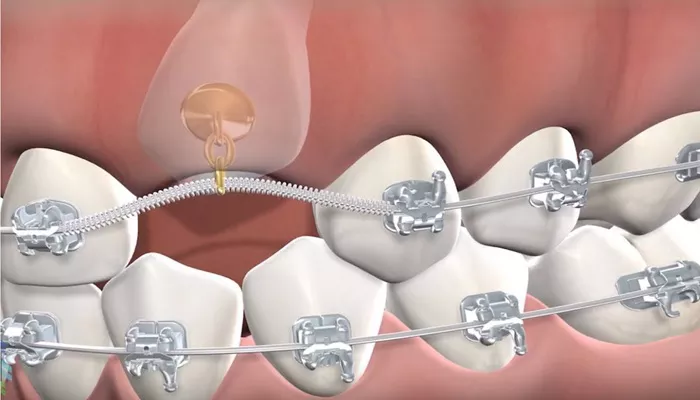Orthodontics, a specialized branch of dentistry, focuses on the alignment of teeth and jaws to ensure proper function and aesthetics. One common concern among patients seeking orthodontic treatment is the cost, especially when considering National Health Service (NHS) options in the United Kingdom. This guide aims to provide a detailed, professional perspective on the cost of braces through the NHS, offering insights into the pricing structure, eligibility criteria, and the overall process.
Understanding the Cost Structure of NHS Braces
The cost of braces through the NHS in the United Kingdom is generally subsidized, meaning patients do not have to bear the full financial burden. However, there are still some costs associated with the treatment, and understanding these is crucial for making informed decisions.
Eligibility for NHS Orthodontic Treatment
Before discussing the cost, it’s important to understand who is eligible for NHS orthodontic treatment. The NHS provides orthodontic services to patients who meet specific criteria, which are usually based on the severity of the malocclusion (irregularities in the alignment of teeth and jaws) and the potential benefit of treatment.
To be eligible for NHS braces, patients must typically have a moderate or severe malocclusion that affects their dental health and/or facial aesthetics. This includes conditions such as overcrowding, gaps between teeth, crossbites, and overbites. The assessment for eligibility is usually carried out by an NHS dentist or an orthodontic specialist, who will examine the patient’s teeth and jaws and take necessary X-rays and impressions.
Cost Breakdown of NHS Braces
While the NHS covers a significant portion of the cost of orthodontic treatment, there are still some associated fees that patients need to be aware of. These fees can vary depending on the specific treatment plan and the patient’s circumstances.
Initial Consultation and Assessment
The first step in the orthodontic treatment process is an initial consultation and assessment. This usually involves a detailed examination of the teeth and jaws, including X-rays and impressions. The cost of this initial consultation is usually covered by the NHS, meaning patients do not have to pay for it.
Banding Fees
Once a patient is deemed eligible for NHS orthodontic treatment, they will be assigned to a specific banding category based on the severity of their malocclusion. The banding system determines the level of funding the NHS will provide for the treatment.
There are typically three banding categories:
Band 1: This category covers mild malocclusions that require minimal treatment, such as simple extractions or adjustments. The cost for Band 1 treatment is usually low, and in some cases, it may be fully covered by the NHS.
Band 2: This category covers moderate malocclusions that require more extensive treatment, such as braces or retainers. The cost for Band 2 treatment is partially subsidized by the NHS, with patients usually having to pay a contribution towards the cost.
Band 3: This category covers severe malocclusions that require complex treatment, such as jaw surgery or extensive orthodontic work. The cost for Band 3 treatment is usually higher, with patients having to pay a larger contribution towards the cost.
It’s important to note that the specific banding fees can vary depending on the region and the NHS trust providing the treatment. Therefore, it’s essential for patients to check with their local NHS dental service to get an accurate quote for the cost of their treatment.
Additional Costs
In addition to the banding fees, there may be some additional costs associated with NHS orthodontic treatment. These can include:
Prescription Charges: If a patient requires prescription medications during their treatment, they may have to pay for these separately.
Travel Costs: If a patient has to travel to a specialist orthodontic center for their treatment, they may have to cover the cost of travel and accommodation.
Replacement Appliances: If a patient loses or damages their braces or retainers during treatment, they may have to pay for replacements.
Payment Options and Financial Support
For patients who are eligible for NHS orthodontic treatment but are struggling to afford the associated costs, there are several payment options and financial support available.
NHS Low Income Scheme: If a patient’s income is below a certain threshold, they may be able to apply for the NHS Low Income Scheme. This scheme provides financial support for dental treatment, including orthodontic treatment, by reducing or waiving prescription charges and other associated costs.
Dental Plans: Some dental practices offer dental plans that include orthodontic treatment. These plans usually involve a monthly fee, which covers the cost of treatment over a specified period.
Payment Plans: Many orthodontic practices offer payment plans that allow patients to spread the cost of treatment over several months or years. These plans can be tailored to the patient’s financial situation and can include interest-free or low-interest financing options.
The Importance of Timely Treatment
Orthodontic treatment can have a significant impact on a patient’s dental health and facial aesthetics. However, the success of treatment often depends on starting it at the right time.
Early intervention can prevent more severe malocclusions from developing and can make treatment more effective and less invasive. Therefore, it’s essential for parents to take their children to the dentist regularly for check-ups and to discuss any concerns they have about their child’s dental development.
For adults, orthodontic treatment can still be effective, but it may require more extensive work and a longer treatment time. However, with the right treatment plan and support, adults can achieve a healthier, more aesthetically pleasing smile.
Conclusion
In conclusion, the cost of braces through the NHS in the United Kingdom is generally subsidized, but there are still some associated fees that patients need to be aware of. Understanding the eligibility criteria, banding fees, and additional costs is crucial for making informed decisions about orthodontic treatment. With the right support and payment options, patients can access the treatment they need to achieve a healthier, more aesthetically pleasing smile.
Related topics:

